No One Talks About This Reason Why Succulents Die All The Time
Almost everyone seems to agree that overwatering is the most common reason people kill their succulents. However, while watering is a contributing factor, it's not the main reason. A commonly overlooked part of caring for succulents is planting them in the right kind of soil. Most people don't think twice about what their succulent is growing in, but stress about how often to water. Here you'll find the perfect soil recipe for succulents, along with where to get it so your succulents can thrive and you can stress less about watering.
More Important Than Watering

Over the years, I've done a lot of research about the best type of soil for succulent container gardens, I've tried quite a few approaches and found that some of them work much better than others.
In fact, I've learned that, while improper watering of succulents is a major cause of succulent deaths, the correct soil is a much bigger contributing factor than people realize.
Criteria for “Good” Succulent Soil

Let's start by talking about what you should be looking for in a succulent soil.
The best soil for succulents in pots will hold enough water for them to absorb what they need, but still dries out quickly so the roots won't rot.
Succulents absorb water from the air around them, not through direct contact.
No Sitting In Wet Soil
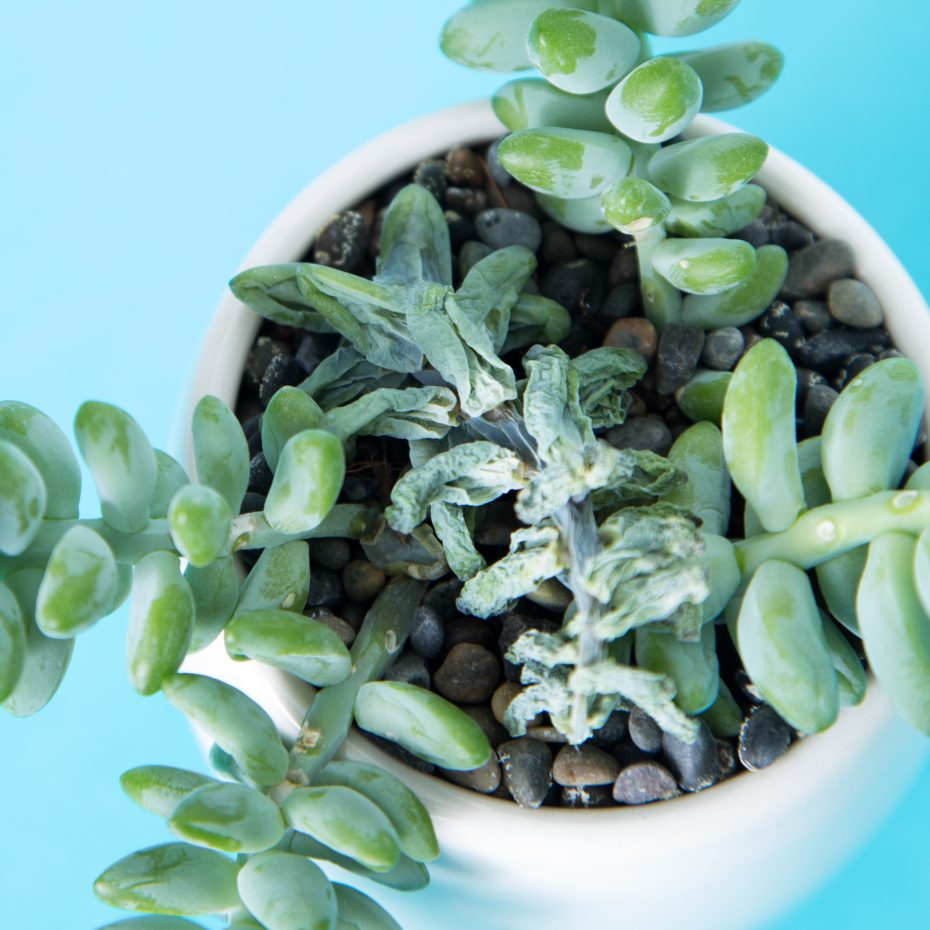
Constantly sitting in wet soil causes their roots to rot, because they get too much water–eventually, the cells in the roots and leaves fall apart, causing the plant to die.
Not a pretty sight!
Several environmental factors can cause soil to dry out, so different types of soil will be best-suited for different growing areas.
The area where you live, as well as the location where you keep your succulents, will play a role in determining what type of soil your succulents need.
The Perfect Indoor Succulent Soil

As mentioned earlier, I grow a lot of succulents indoors. Since indoor environments don't offer as much air circulation around indoor pots, I've found that using the right soil is extremely important for the health of indoor succulents.
I highly recommend using a soil with a large particle size, roughly 1/4″ or 6mm. I learned all about particle size, and the role it plays in well-draining soils, by reading the Garden Web Forum, specifically from this post by Al. Take a look!
In the article, Al gives a recipe for soil that works extremely well for indoor succulents. I used to make the soil myself (since it was not available pre-mixed). The recipe combines:
- 1 Part Pine Bark Fines
- 1 Part Turface (an absorptive rock)
- 1 Part Crushed Granite
Why it works
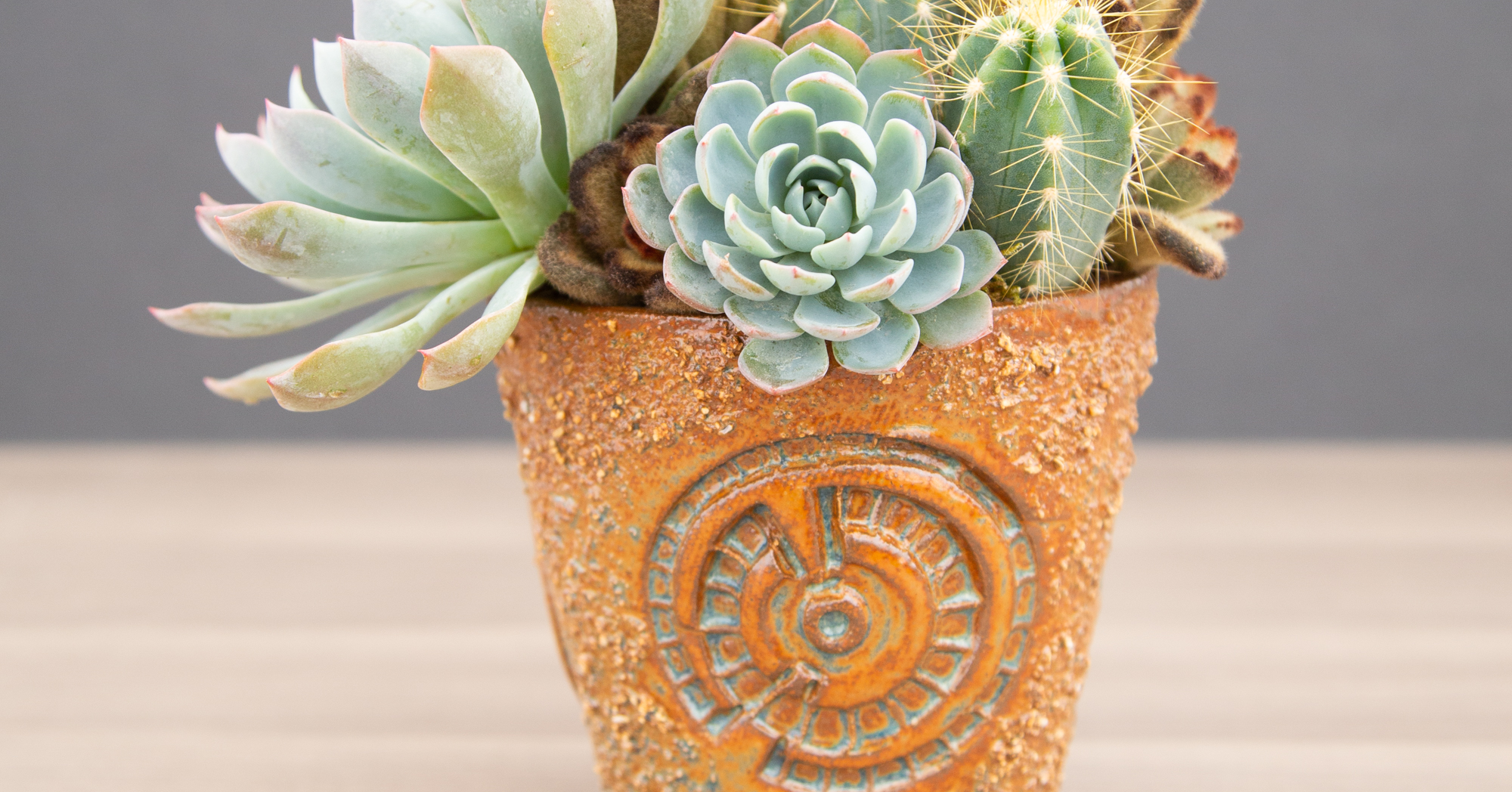
Succulents will grow in a variety of soils, but I want to go over why this soil works and why you should use it.
The pine bark provides an organic element and holds water–but it has air pockets for ventilation. As a bonus, it takes a long time to break down. The Turface absorbs some of the water and slowly releases it.
Crushed granite allows the water to flow among all the particles in the pot. Since the mix is very porous, water flows out easily. Plus there's plenty of air, which means the roots are not left sitting in soggy soil or pools water like traditional potting soil.
The really crucial part of the recipe, though, is to make sure all the particles are roughly 1/4″ in size. It's a lot of work to screen gallons of soil to get uniform-sized particles!
Pre-mixed option
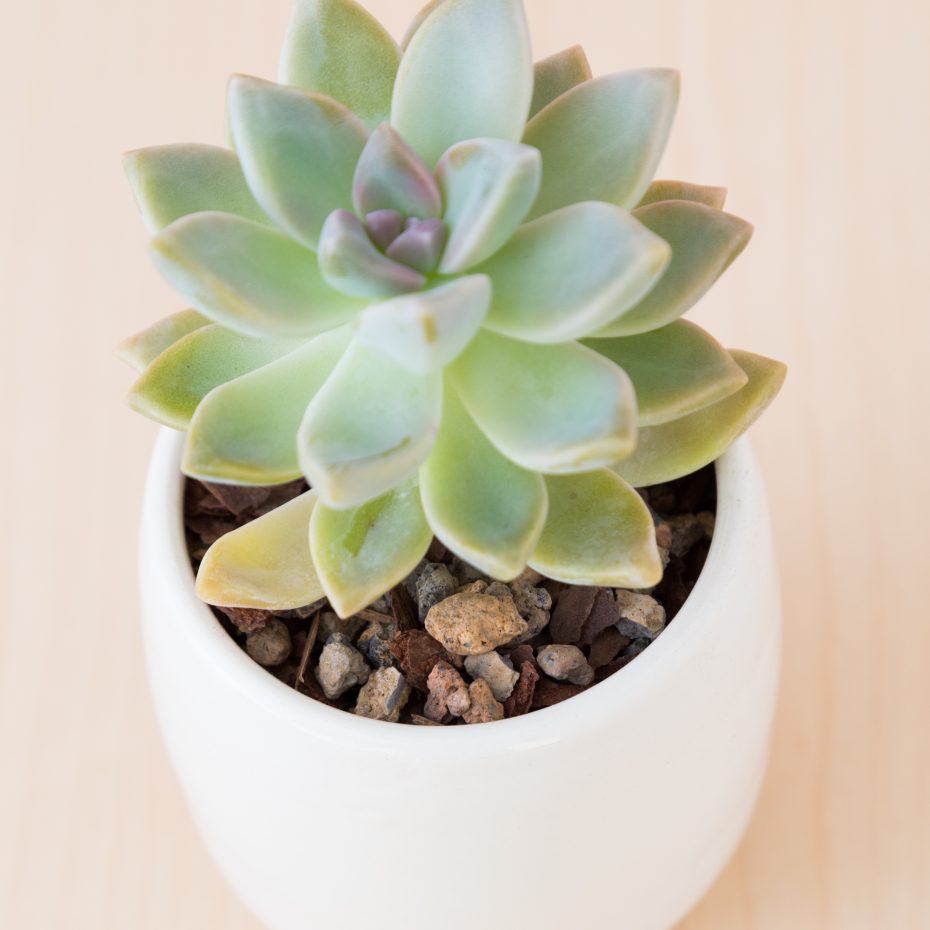
Mixing this soil recipe myself was time-consuming and quite a challenge. But you're in luck! You can now buy a ready-to-go bag of this soil from Bonsai Jack.
He's an expert when it comes to soil, and this mix in particular is amazing for succulents. I've been working with Jack since 2015 to perfect and improve this soil mix and we have hundreds of happy customers!
The particle size and consistency of the Bonsai Jack mix are exactly right for indoor succulents. For example, while Turface is usually only available in 1/8″ particles, Jack has been able to get a 1/4″ size, specifically to use in this mix.
I highly recommend using this Bonsai Jack Succulent Soil for your indoor succulents. Especially if you tend to overwater, this soil will help your succulents thrive!
However, if you'd rather not purchase this “gritty mix” online, it is possible to make it yourself. You should be able to find the ingredients at most nurseries.
Turface is also found at most auto parts stores as a product called “Oil-dri,” which mechanics use to clean up oil spills.
If you don't have access to these exact materials, you can substitute other ingredients. Just keep in mind the ratio of inorganic to organic material needs to stay the same.
For example, if you use another type of bark, make sure you mix in another type of rock (such as pumice) as well. The really critical piece, as I mentioned above, is to ensure that the particle size is always roughly 1/4″ or 6mm.
Soil for Outdoor, Potted Succulents
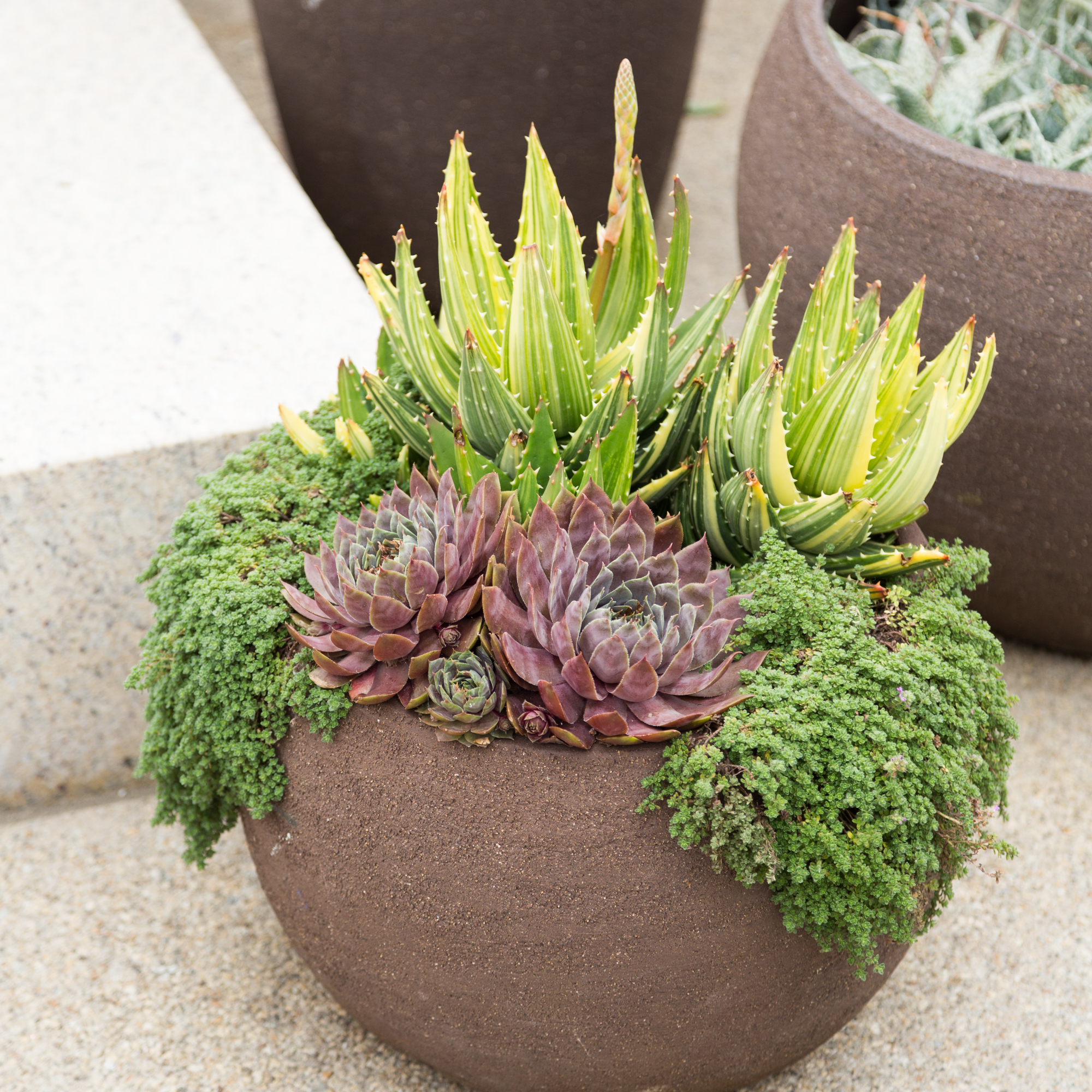
If you're growing succulents outdoors, on the other hand, the Bonsai Jack Succulent Soil may or may not be the right fit for you.
Since most of my succulent experience has been in Utah, where the weather is generally quite dry and hot in the summers, I found that using the Bonsai Jack mix worked fairly well outdoors, but it required me to water my succulents every other day.
I'm not great at remembering to water, so this mix required too much maintenance for me. Instead, I've been using a mix of Coconut Coir and pumice (or Turface, or crushed granite, depending on what I have most easily available).
- 1 Part Coconut Coir
- 1 Part Pumice
I wouldn't use coir indoors, as I discovered it didn't dry out fast enough for most of my succulents. However, it's great for outdoors in warm, dry climates.
The added pumice, which is also lightweight, allows the soil to drain a little faster without drying out too quickly.
What about the bagged succulent mixes at big box stores?
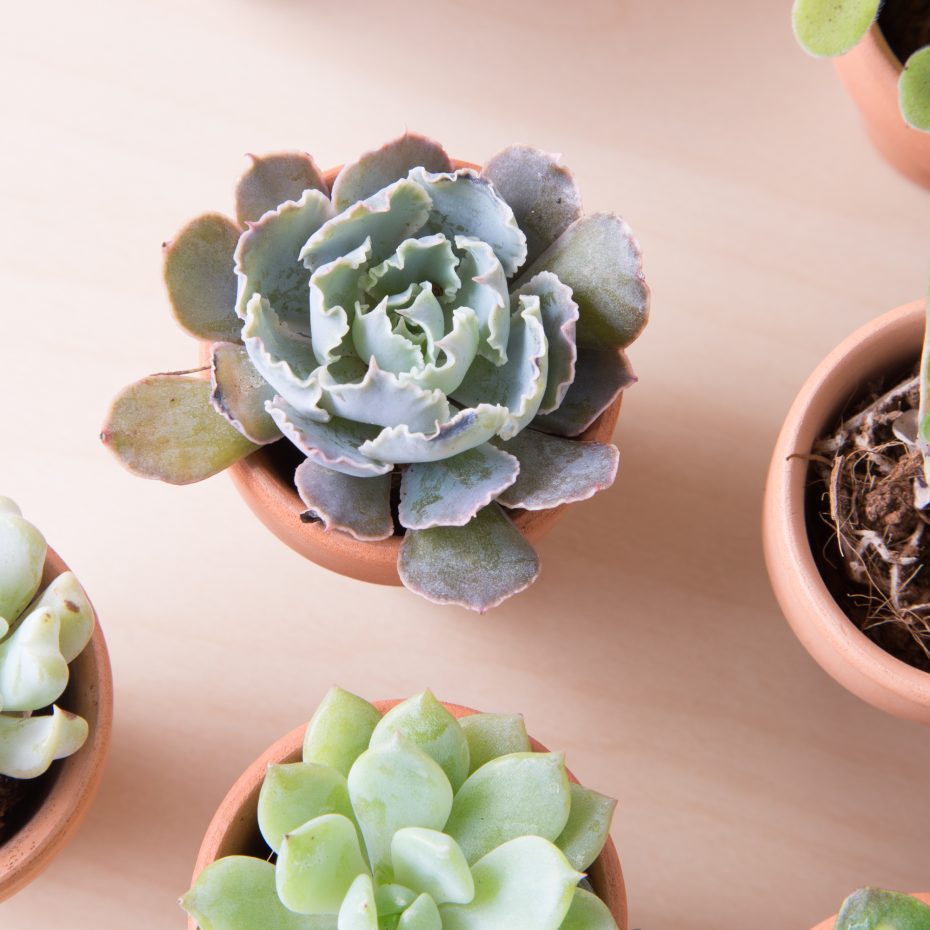
If you aren't able to find any of the soil components listed in the recipes above, the next best solution is to pick up a bag of “succulent and cactus mix” at your local Lowes, Home Depot or Wal-Mart.
This soil works fairly well for succulents. However, it doesn't drain very well, and it tends to repel water when it's completely dry. I highly recommend adding in a rock material such as pumice, crushed granite or even perlite.
Other Options
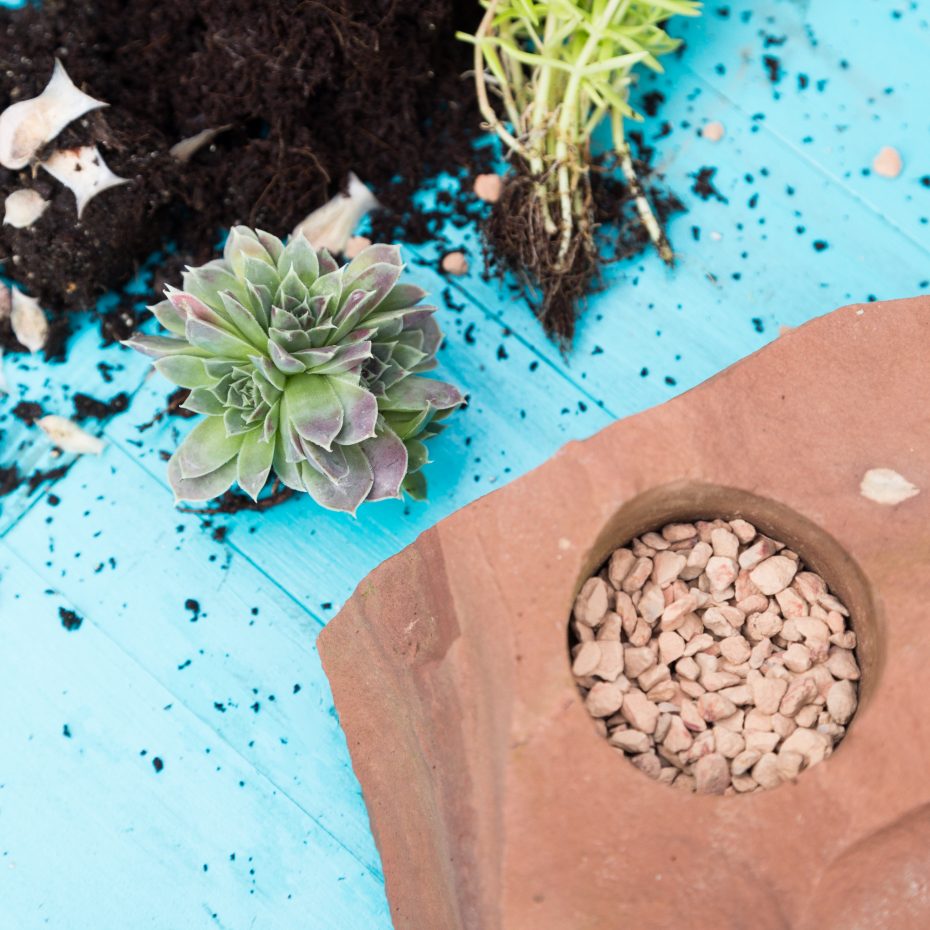
Perlite for Succulents
Adding perlite to your succulent soil mix can help it be lighter and drain better. One potential downside to perlite is that it crushes easily. So over time, the perlite breaks down into a powder.
Usually though, you'll be refreshing your soil every couple of years and you can replace the perlite as you do so.
Pumice for Succulents
As mentioned above, if you're using more organic soil I highly recommend adding in pumice as it's much more durable than perlite.
You can also plant your succulents in exclusively pumice, though you'll want to be careful with your watering frequency.
Pumice is very porous and traps water in dozens of holes in each particle. This can work well for succulents as pumice doesn't "feel" wet like a traditional potting soil and it allows for more airflow around the particles, similar to the gritty mix.
However, it does trap a lot of water so you want to make sure it dries completely before watering your succulents again.
Sand in Succulent Soil
Coarse sand can be used in succulent soil recipes. Remember from above though, look for particles 1/4" (6mm) or larger.
Using a fine-grain sand, such as beach sand, can actually prevent your soil from draining as well because it is so dense and can suffocate the roots.
Do I need to repot my succulents right now?
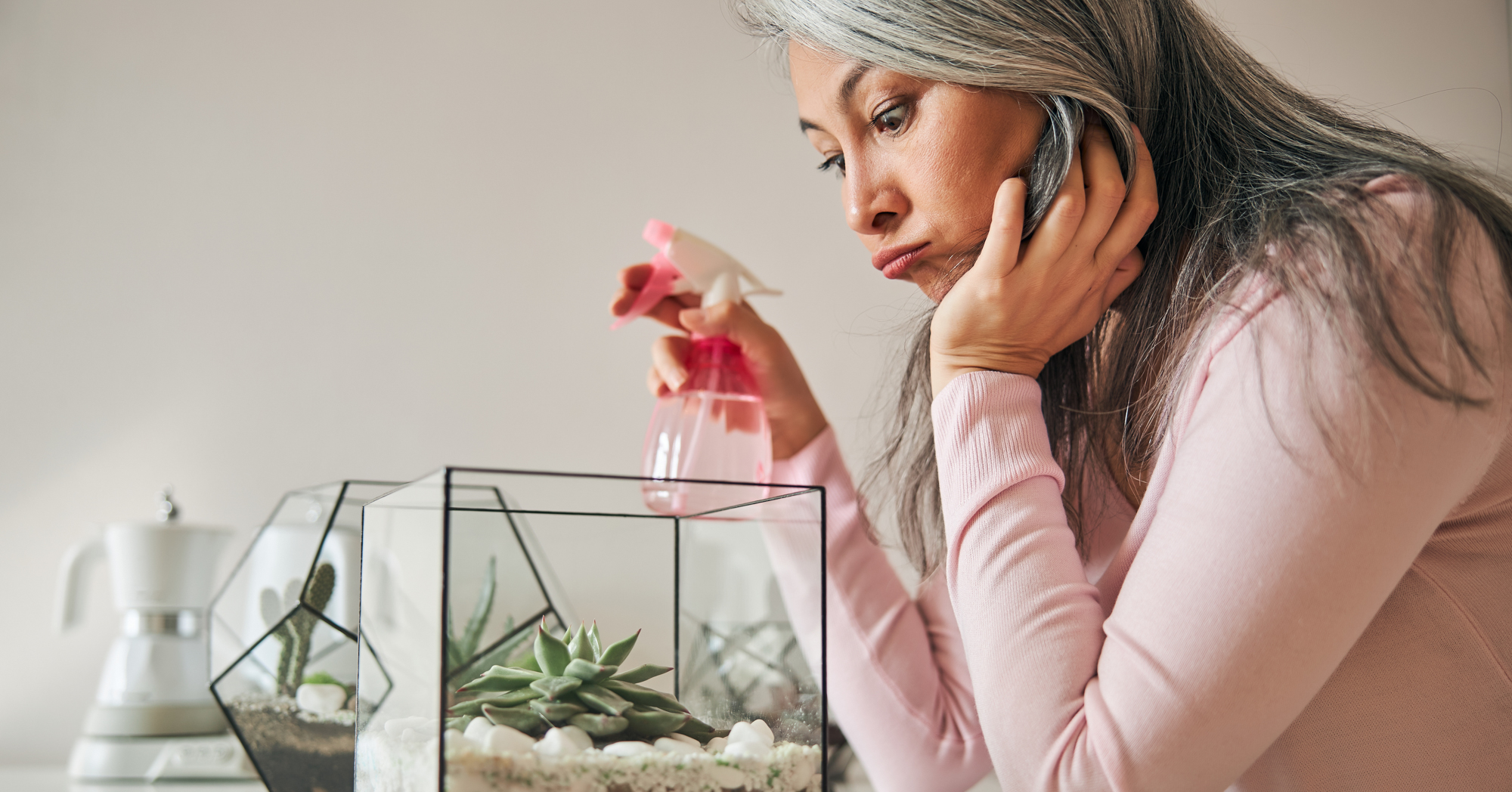
If your succulents are currently doing well in the soil they're in, don't repot just yet. As I said in the beginning, the right soil for your succulents depends on your climate, as well as the location in which you keep your plants.
In other words, if it's working… stick with it.
On the other hand, if you've found that your succulents are frequently dying, and you can't quite figure out what's going wrong, soil is a great place to start.
While replacing your soil mix may not solve all your problems, your succulents will be much happier in soil that drains well and has plenty of airflow around the roots.
Repot new succulents in new succulent soil
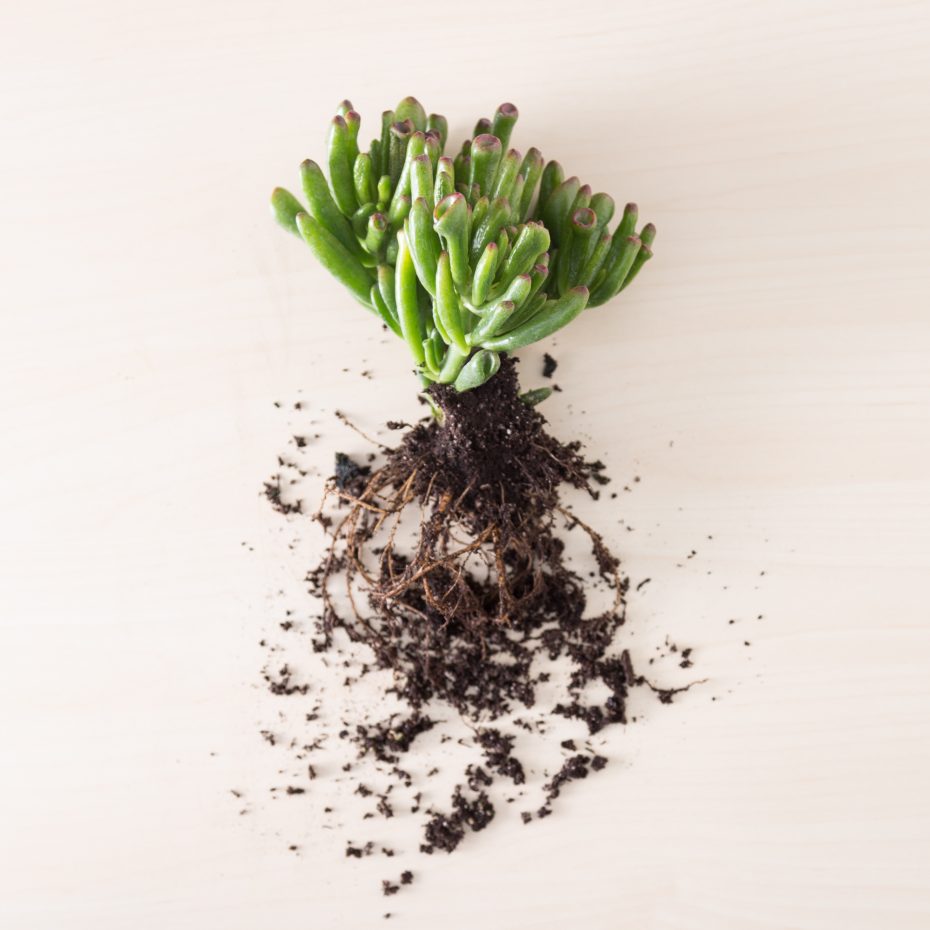
As soon as you bring home a new succulent, repot it in new soil as soon as possible, removing most of the soil from the store pot. Many common problems with succulents come from keeping succulents in their original store-bought soil.
Soil from the store poses two main problems. First, succulents purchased locally tend to be root-bound (meaning the roots fill up most of the pot). If you simply remove the succulent and place it in a new pot, the roots will have a hard time spreading.
Another important reason to repot
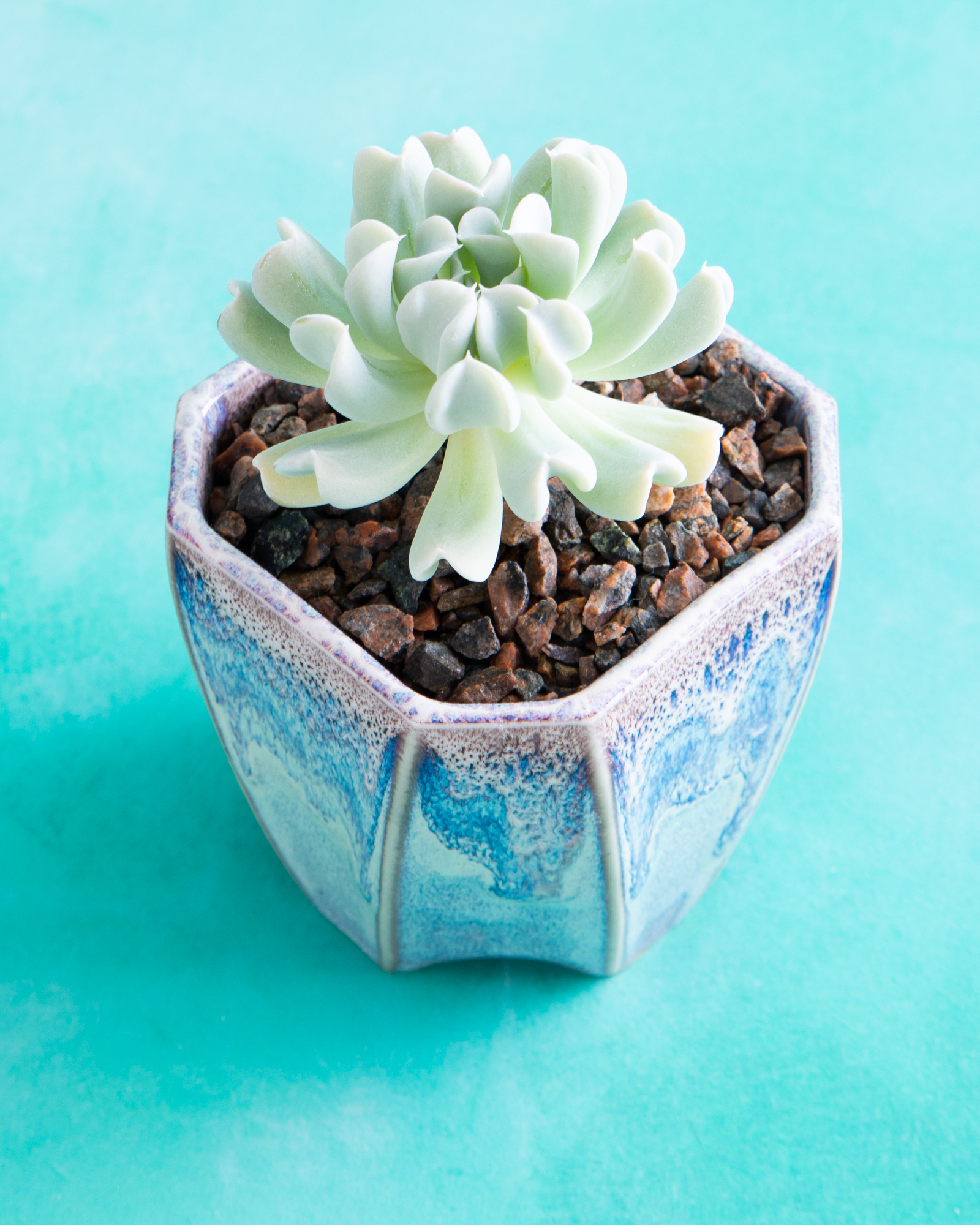
Second, most nurseries sell succulents in soil that is not designed for long-term growth. Or at least not long-term anywhere other than a greenhouse.
This is because large nurseries and growers generally use the same soil for all their plants. They want a soil mix that will work for most anything. When succulents are small, they need more water, so dense soil (like regular potting soil) works at that stage.
But leaving succulents in this soil for too long can quickly cause a succulent to rot–or in some cases, prevent it from getting the water it needs.
Peat moss is the primary ingredient in most potting soils. When the moss dries out completely, it tends to repel water.
If you don't let the water soak on top of the soil and start to penetrate the peat, the succulent won't get any water. The water simply runs down the sides of the pot and out the bottom.
So please, for the health of your succulent, replant them as soon as you can after purchasing. They will greatly appreciate the healthy new soil and room for their roots to spread.
Don't miss these important tips for planting succulents
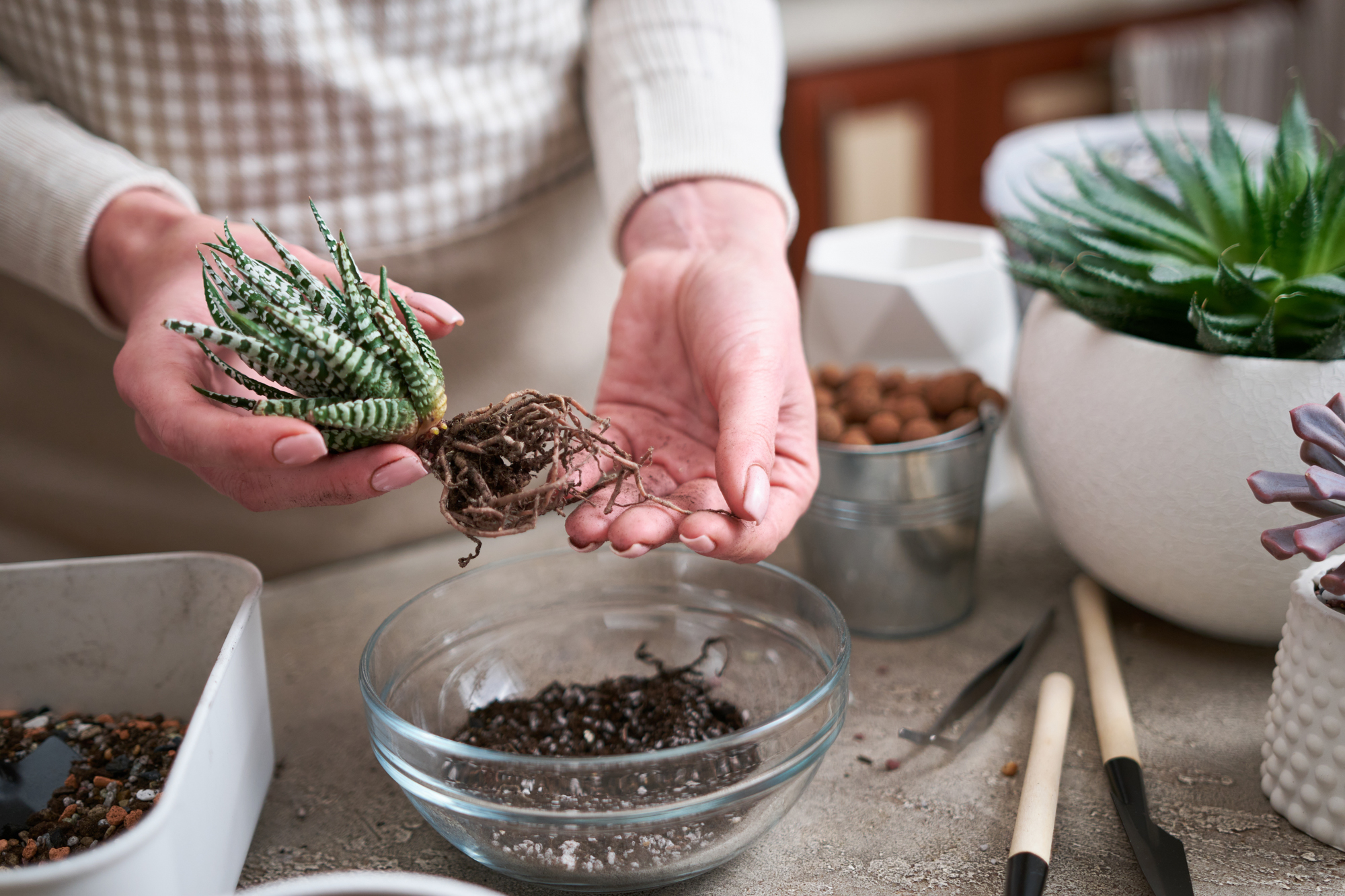
After you purchase a new succulent, it's important that you replant it to ensure it stays live in your home. Taking a few minutes to learn how to plant succulents will start your succulent growing journey off on the right foot. You'll want to make sure you have the right supplies, including soil and pottery, to give your succulent (and yourself) the best chance at success.
Save Your Succulents With This Critical Watering Techinque And Look Like A Pro
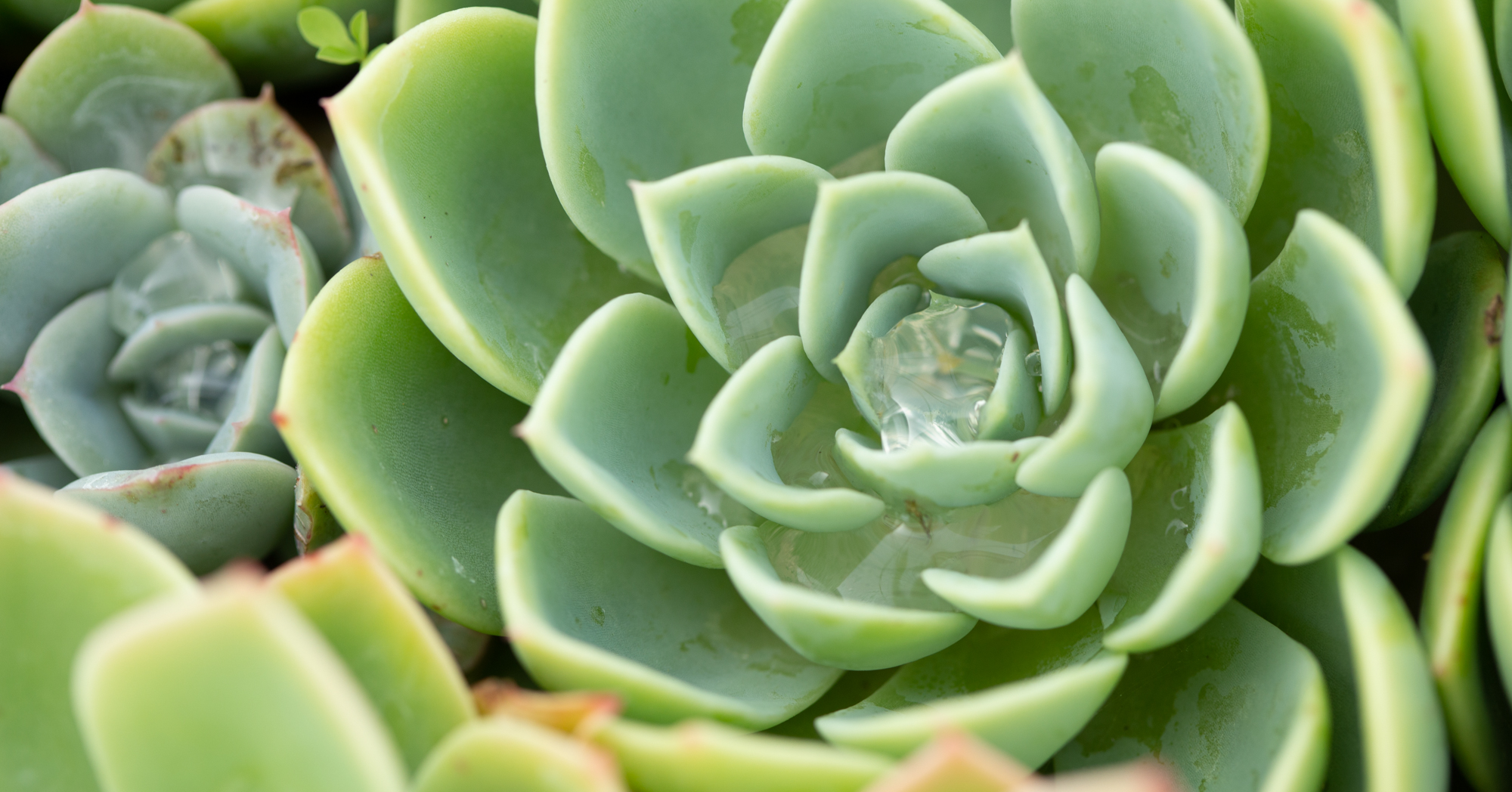
A big part of keeping succulents healthy is providing them with the right environment. You'll want to pay attention to the soil they're in, how much sunlight they're getting, and most importantly, how often you're watering them. The method and frequency of watering succulents are critical to preventing rot while encouraging lots of new growth.
What To Do If Your Succulent Is Dying
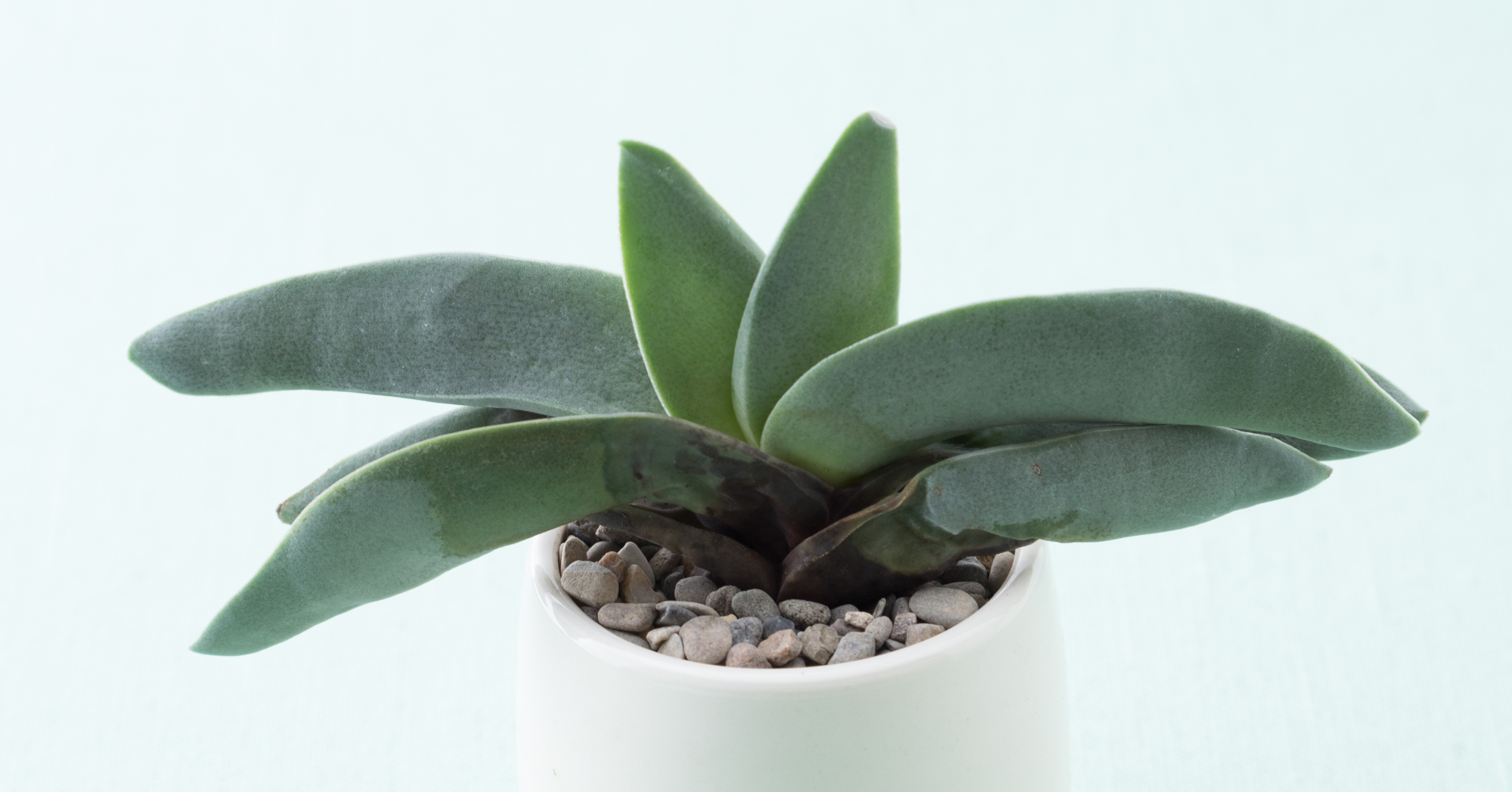
There are a number of reasons your succulent might not be looking great. Find out how to tell what's wrong with your succulent and how you can fix it or prevent it from happening again.
7 Worst Mistakes Beginners Make When Growing Succulents
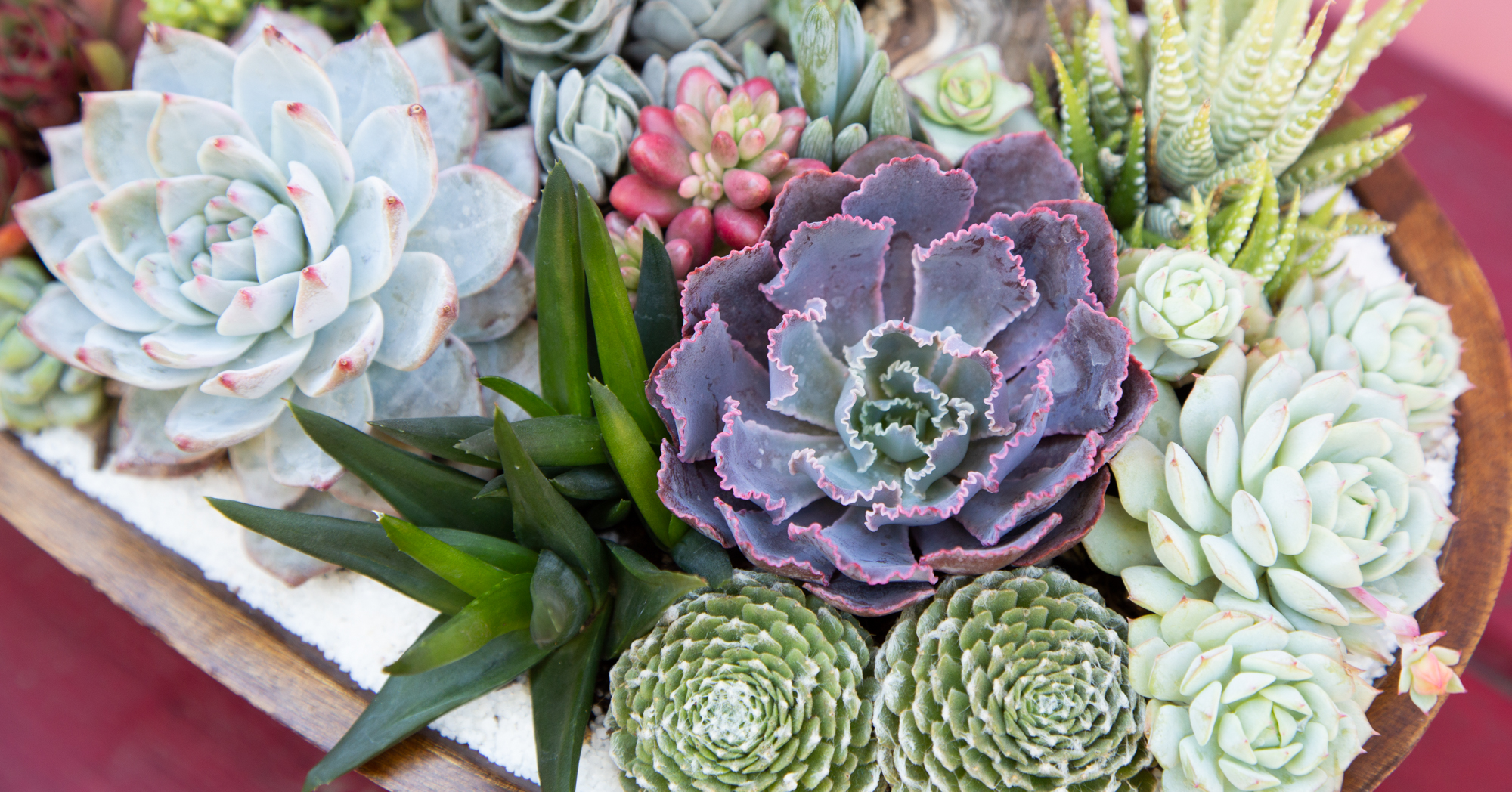
Many people assume that they can take care of succulent plants however they want -- just treat them like normal house plants. The problem is succulents aren't like most other house plants. They have completely different watering needs and often need more sunlight and airflow than other plants. Find out what the most common succulent mistakes are and how to avoid them.
Get more succulents for free with this simple propagation technique
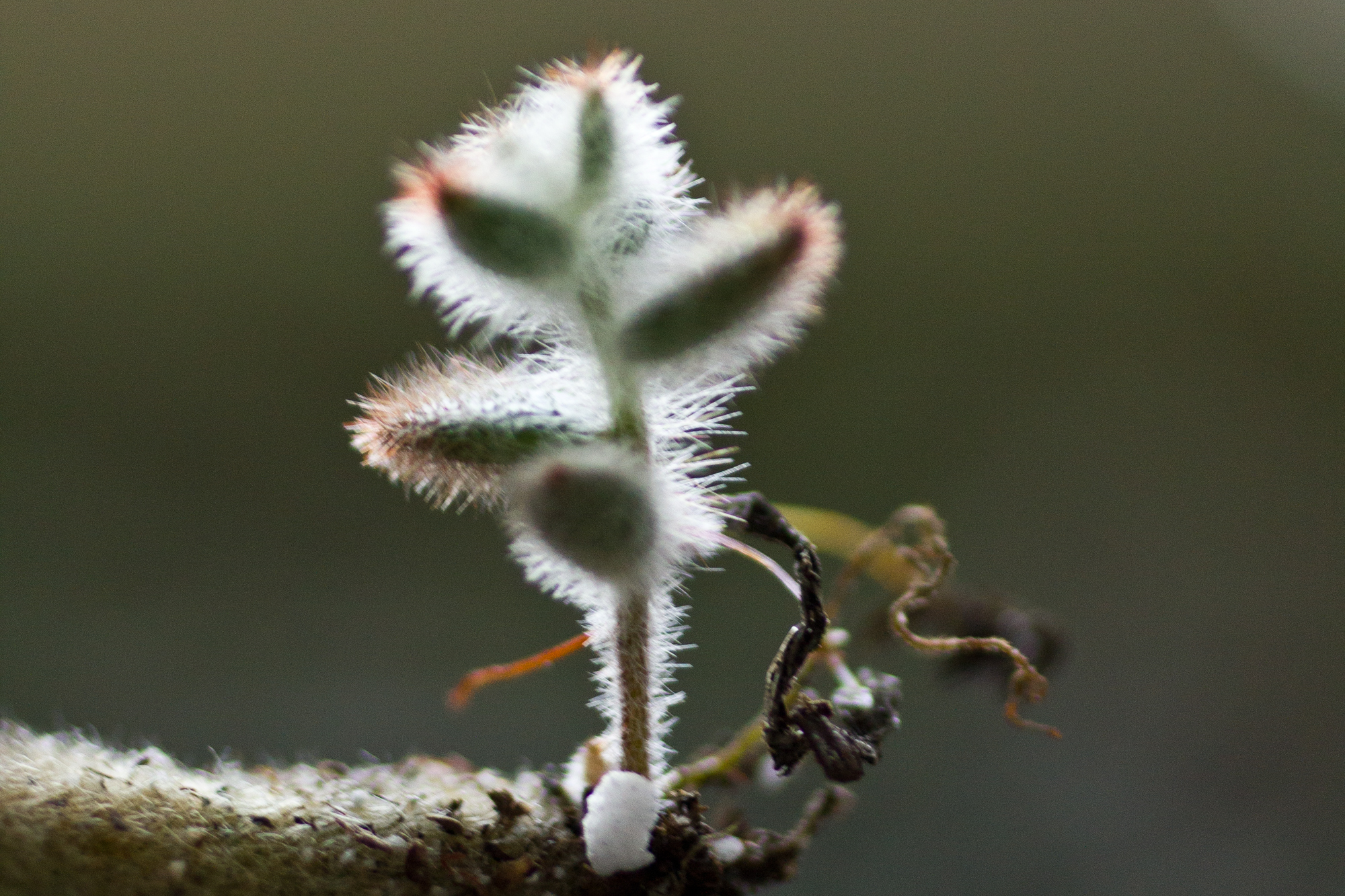
One of the best things about growing succulents is how easily they propagate (grow new baby plants). Propagating succulents from leaves is extremely fun and a rewarding way to get more plants without having to buy new ones. Learning this simple technique can be quite addicting but may help keep your plant budget on track.
Expert Tips for Creating Stunning Succulent Arrangements
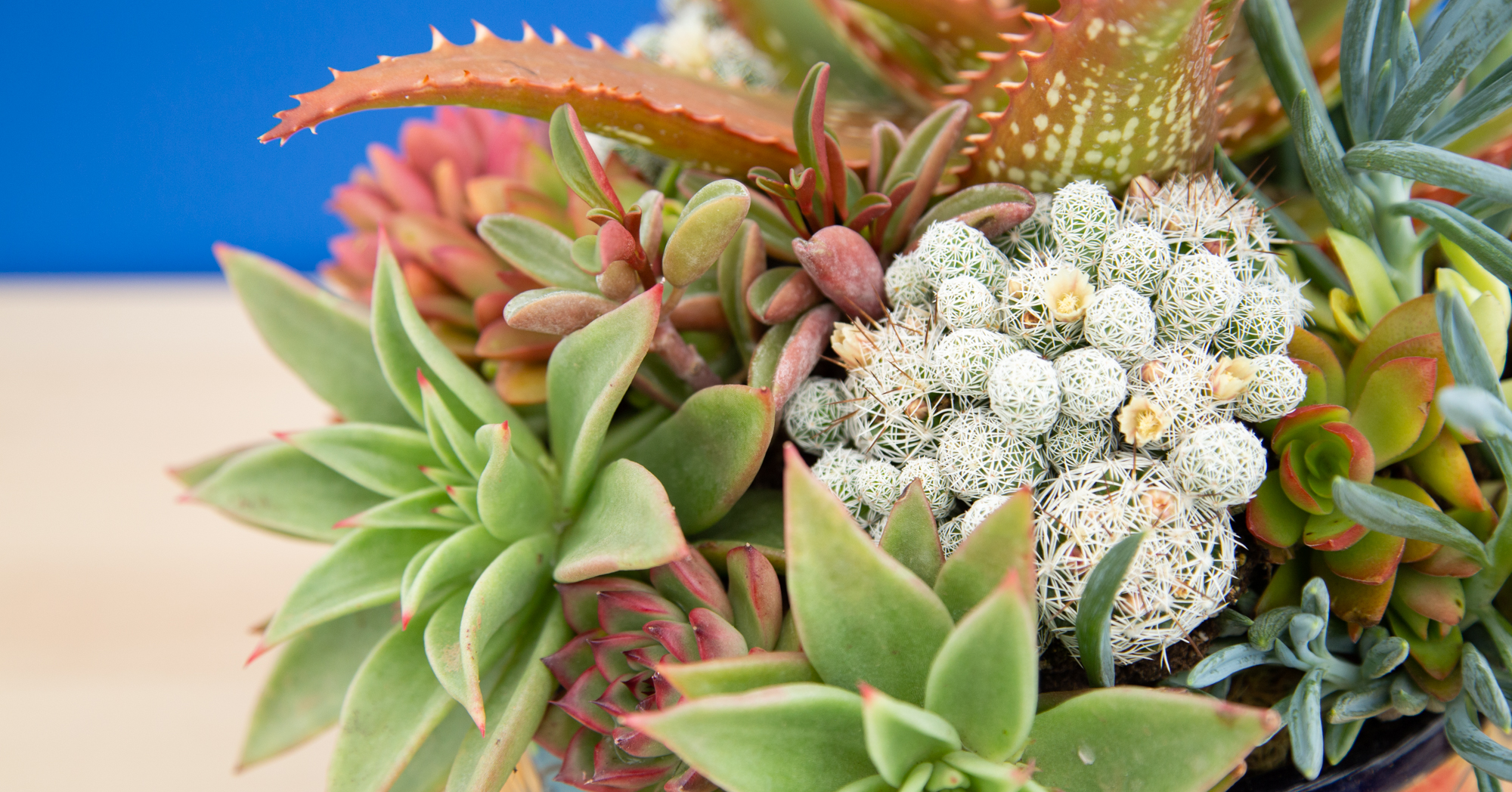
Figuring out which succulents to combine together to make a beautiful arrangement can be daunting. But with these tips from succulent design experts, you'll be able to put together crowd-pleasing arrangements easily, whether it's in pots or in the ground.
This article originally appeared on Succulents and Sunshine.